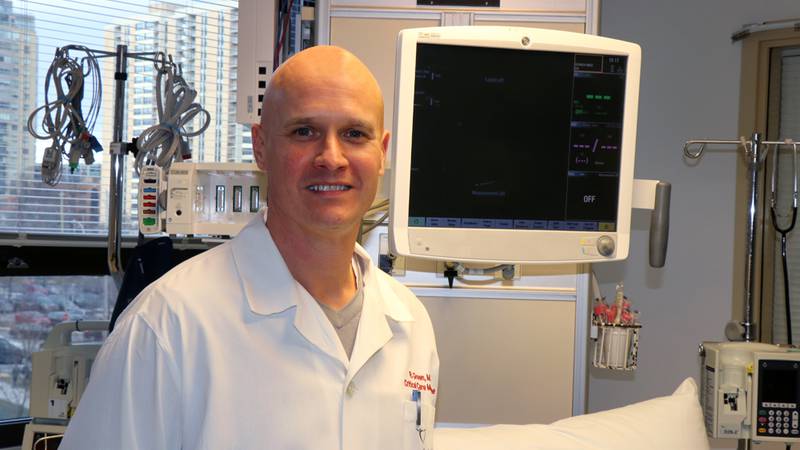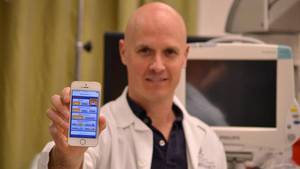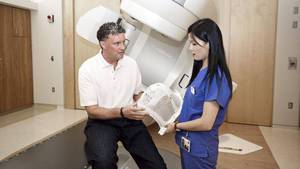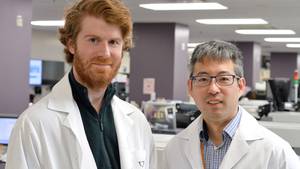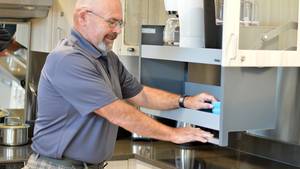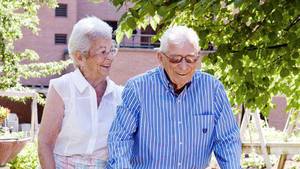It is often said that in all situations — no matter how bad they may seem — we need to find even a sliver of good if we are to be able to move forward.
Dr. Robert Green, medical director of Trauma Nova Scotia, understands this all too well.
As a trauma and critical care physician at the QEII Health Sciences Centre, Dr. Green sees both sides of a complicated and emotional subject — which usually only becomes relevant when people are at their most vulnerable.
Dr. Green spends most of his waking moments thinking about — or working with — trauma and critical care patients, both of which come with high-risk outcomes. But it’s here that he’s able to bridge the gap between what is undoubtedly the worst and best outcomes for individuals and their families.
“When trauma patients have terrible injuries that they are not going to survive, the only good thing that is going to come out of that totally horrific situation is to save another life,” says Dr. Green, adding that it can be a highly-charged subject for the family.
For Dr. Green, organ donation has become an important focus. Since the QEII is the only hospital in Atlantic Canada that can perform these vital organ transplants, Dr. Green is focused on finding ways to not only help every trauma patient, but also those in need of a life-saving organ donation. He says the two are intrinsically intertwined, which is why he continues to research what is needed to improve organ donation and trauma medicine.
“There is not enough awareness about organ donations. It is a hard and uncomfortable discussion to have, but it is one we all need to have.”
- Dr. Robert Green
“In Nova Scotia, 40 per cent of patients with trauma who died in hospital were potential organ donors, yet only 39 per cent of these patients were referred for donation,” Dr. Green explains.
In 2018, he published a report in the Canadian Medical Association Journal (CMAJ) that examined the number of traumas in Nova Scotia, the types of traumatic injuries, the number of critically-injured people that were referred for organ donation and the number that ultimately went on to donate.
Dr. Green and his colleagues were able to confirm what they already anticipated: more work is required to improve organ donation within the trauma population. The team is working with the Nova Scotia Legacy of Life program — the province’s organ and tissue donation program — to improve the organ donation system by developing a more focused plan with the transplantation team, establishing regionally based donation physicians and implementing a data management system so missed opportunities can be recognized and information fed back to healthcare teams on the front line in a timely fashion.
Dr. Green’s first-of-its-kind study was critical for many reasons, but especially because there haven’t been any similar studies in Canada to date. For those waiting for a transplant, this research is vital.
At any given time in Atlantic Canada, there can be more than 300 people waiting for an organ transplant, according to the Multi-Organ Transplant Program (MOTP) Atlantic Canada at the QEII, which serves Nova Scotia, New Brunswick, Prince Edward Island and Newfoundland. In 2017, only 96 received a transplant.
Dr. Green says part of the issue simply comes down to education.
“There is not enough awareness about organ donations. It is a hard and uncomfortable discussion to have, but it is one we all need to have,” he says.
Dr. Green says one of the biggest reasons why a particular donor is not accepted is because the family has refused — even in cases where the recipient themselves has already agreed to donate.
Apart from physicians doing more to refer potential donors, Dr. Green says the bottom line is that the public needs to understand “just one organ donor can save eight lives.” According to the Legacy of Life, a single tissue donor can save or improve the lives 50-80 people.
“Don’t ever exclude yourself as a potential donor,” Dr. Green says. “Even people with underlying conditions or those that are older may be able to donate in some capacity.”

